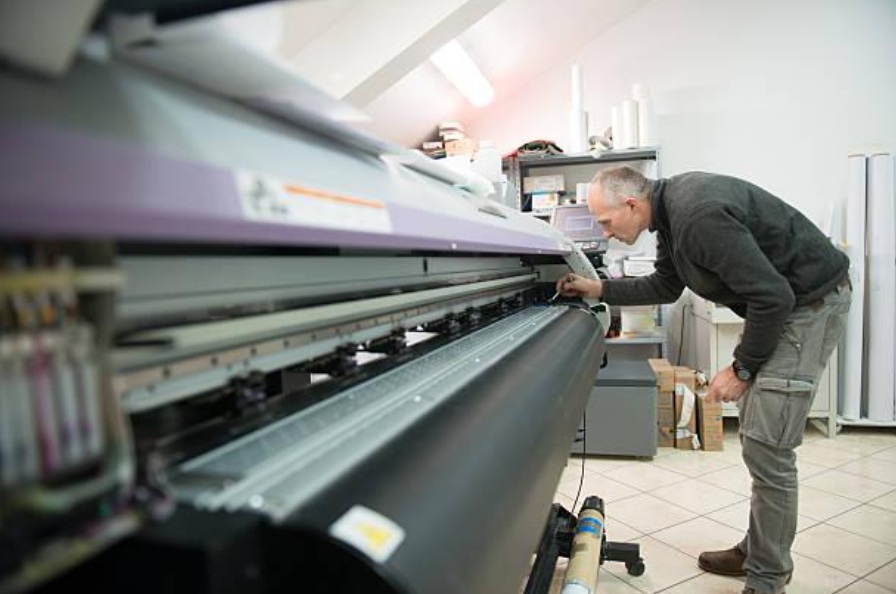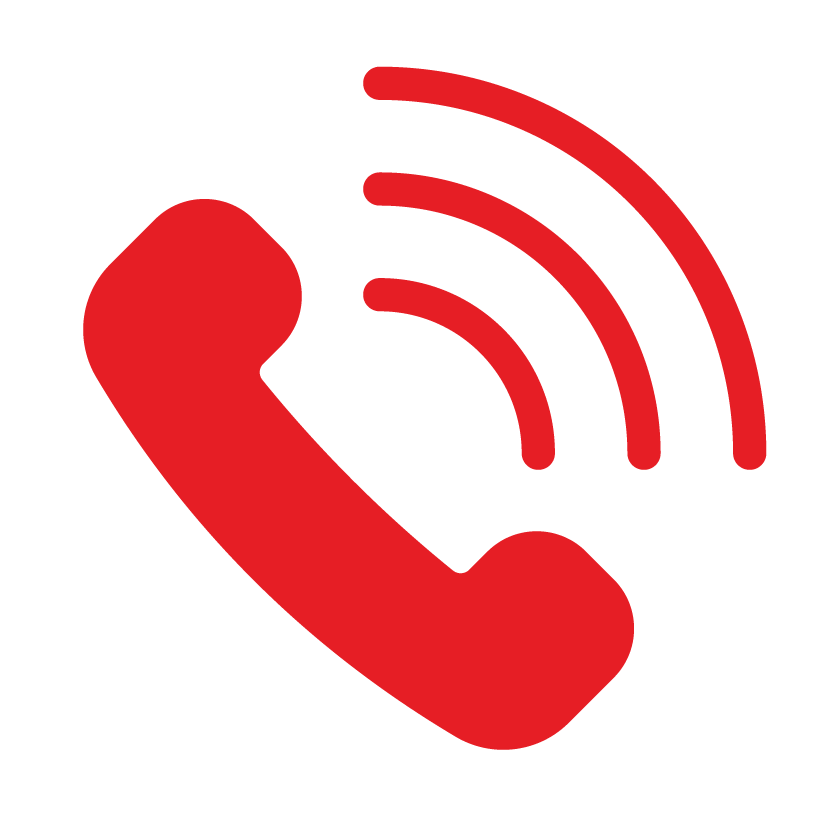
What Are Large Format Printers?
A large format printer — also known as a wide format printer — is a printer that’s been designed to produce prints larger than standard sizes, such as A4 or letter. Large format printers are built to handle wide-format projects, including banners, posters, blueprints, and billboards, using advanced technology to support oversized media while ensuring high-quality, precise, and efficient results.
Large format printers offer exceptional versatility in producing oversized prints for various industries, which has made them the lifeblood of the modern office. With print roll widths ranging from 18" to 100", they have vital essential tools for countless visual communication projects. You can scroll down to learn more, or browse DDS Group’s large format printers here.
Types of Large Format Printers
Large format printers are classified based on various criteria, such as printing technology, mechanisms, applications, and substrate compatibility, but they are typically grouped into two primary categories; Large Format Printers by Printing Technology, and Large Format Printers by Printing Mechanism,
Printers categorised as Large Format Printers by Printing Mechanism are classified based on their physical operation, such as flatbed, roll-to-roll, and hybrid models, impacting the materials used and applications suited for each type. In contrast, printers categorised as Large Format Printers by Printing Technology are so defined because of the specific technologies employed—like aqueous inkjet, solvent inkjet, dye-sublimation, and UV printing—highlighting their unique advantages and ideal use cases.
Large Format Printers by Printing Technology:
Wide format printers primarily use either inkjet or toner-based technologies, each offering distinct benefits. These technologies provide a range of solutions depending on the print application, material, and durability requirements.
- Aqueous Inkjet Printing: This popular method uses water-based inks to produce highly detailed images on a variety of substrates. It provides excellent colour accuracy and is versatile for both indoor and outdoor applications. Aqueous printing is widely used for high-quality photography, trade show displays, and projects that require precision.
- Solvent Inkjet Printing: This durable printing method is ideal for outdoor signs and graphics. Solvent-based inks adhere to surfaces and evaporate, leaving behind pigments embedded in the material. While it’s a durable option, requiring proper ventilation due to environmental considerations, it’s still preferred for prints that must withstand harsh weather conditions.
- Dye-Sublimation Printing: Dye-sublimation works by converting solid dyes directly into gas using heat, which bonds with polyester fibres to create vibrant, durable prints. This method produces smooth colour gradients and is commonly used for textiles, promotional items, and signage, but it only works with polyester or poly blends.
- UV Printing: This technology uses ultraviolet light to instantly cure inks as they are applied to the substrate, making it suitable for rigid and flexible materials. UV printing is favoured for signage, packaging, and interior décor projects due to its quick drying times and strong adhesion.
- Laser Printing: Less common in large-format printing, laser technology uses beams to transfer toner onto the substrate. It is most often used for technical drawings and engineering documents due to its high resolution and precision.
Large Format Printers by Printing Mechanism:
- Flatbed Printers: These printers utilise a flat surface designed for printing on rigid materials like wood, glass, metal, and acrylic. The printheads traverse the surface to apply ink directly, making them ideal for producing high-quality prints for applications such as signage, decorative panels, and packaging. They are known for their accuracy and versatility but are not suitable for curved surfaces and typically have slower production speeds compared to roll-to-roll models.
- Roll-to-Roll Printers: These printers operate by feeding flexible materials, such as vinyl, fabric, or paper, through the machine. The substrate is unwound, printed on, and then rewound onto another roll. Roll-to-roll printers are well-suited for creating banners, vehicle wraps, posters, and various flexible signage. They offer high production speeds and are great for long print runs, although they have limitations when it comes to printing on thicker or more rigid materials.
- Hybrid Printers: These models combine the functionalities of both flatbed and roll-to-roll printers, allowing for versatile printing on both rigid and flexible materials. Hybrid printers are applicable in a wide range of areas, including signage, packaging, and textiles, and are known for increased productivity. However, they generally come with a higher initial investment and may require additional maintenance and operator training.
Materials Used in Large Format Printing
By carefully selecting the appropriate material for your printing project, you can ensure that your large format prints are not only visually striking but also durable.
- Vinyl: Ideal for outdoor banners and signage, vinyl is favoured for its weather resistance, making it a go-to choice for printing companies that specialise in screen printing.
- Fabric: This medium provides a softer aesthetic, making it suitable for trade show graphics and interior decor. Fabric is versatile and can be used for a wide range of large format printing projects.
- Canvas: Adding an artistic flair to your prints, canvas is perfect for wall murals and gallery displays. Its ability to maintain high-resolution clarity ensures that images come out sharp and detailed.
- Adhesive-Backed Vinyl: This material is popular for vehicle wraps and graphics, allowing for easy installation. It delivers high-quality output with sharp pixels and is compatible with various file types.
When Should You Use Large Format Printing?
Large format printing is an ideal solution for any occasion where your visuals need to make a great impression. We recommend that you consider large format printing for any of the following scenarios…
- Advertising and Branding: Looking to help your business catch the customer’s eye in busy public areas? Wide format printing is a terrific way to create high quality advertisements for your company on a shoestring dollar. It’s perfect for outdoor materials such as banners, bus wraps and even billboards.
- In Store Displays: Retailers can use large format printing for in-store banners or point-of-purchase displays that will help engage your customers and boost your sales.
- Informational Signage: Whether in a park, a museum, or a school, wide format printing is perfect for creating clear, readable signage in any space where conveying information is integral.
- Decorations: From custom wallpapers and murals, to canvas art and festive greetings, large-format printing adds a personal touch to all yours interior design projects.
- Public Announcements: Looking to ensure your messages reach a wider audience? You large format printing for community events, public service announcements, or political campaigns, ensuring messages reach a broad audience.
- Architectural & Technical Drawings: Large format printing is commonly used by architects, engineers, and construction professionals to print detailed plans, blueprints, and technical diagrams.
- Special Occasions: You can now add your personal flair when producing large banners or posters to display at events such as weddings, anniversaries, and even corporate gatherings.
What Should I Consider When Choosing a Large Format Printer?
- The Different Kinds of Large Format Printers: Large format printers come in two main types: printer-only or multifunction. Printer-only models handle digital files from desktop, printer queues, or USB drives. Multifunction printers include a built-in scanner and are either single footprint (compact, with the scanner mounted on top) or dual footprint (with a separate scanner). If space is tight, single footprint models are ideal, but standalone scanners offer more flexibility, as they allow scanning without interrupting printing tasks. Scanners are often used for creating digital copies of physical documents, such as mark-up drawings, in various file formats like PDF.
- Choosing Between Monochrome or Colour: Like office printers, large format printers can print in monochrome, colour, or both. Colour printers are essential for graphics, posters, and detailed documents, while monochrome is suited for CAD drawings. If you frequently print both types, a colour printer may serve both needs, especially for lower volumes.
- Cost: Having separate colour and monochrome printers might prove more cost-effective for higher print volumes, as colour printers generally incur higher ink costs due to the use of aqueous inks, which may require special media. Monochrome printers, by contrast, offer a simpler and more economical solution for black-and-white prints. However, the decision to print in-house or outsource should also take into account factors such as the scale and frequency of projects. In-house printing can save up to 46% on printing costs compared to outsourcing, depending on your needs and volumes.
- Speed & Performance: When comparing speed and performance, colour printers typically take longer due to the complexity of colour calibration and ink application. Monochrome printers are generally faster, making them ideal for high-output environments where speed is essential. In high-volume settings, printers with advanced performance features such as high-speed processing and automatic adjustments can dramatically reduce lead times. For instance, roll-to-roll printers are known for rapid production speeds, while flatbed models may be slower but excel in accuracy on rigid materials.
- Image Quality: Image quality is, of course, essential when it comes to large-format printing; especially for projects like outdoor advertising or detailed architectural drawings. Colour printers excel in producing high-resolution, vibrant images with rich colour depth, making them suitable for graphics-heavy applications. The use of specialty inks and media can enhance the final output, offering precise colour matching and consistency. Monochrome printers, while less versatile in colour reproduction, are ideal for technical documents where clarity and fine line details are critical, ensuring sharpness in drawings or blueprints.
Conclusion:
Large format printing is ideal for producing high-impact visuals, making it perfect for applications like advertising, trade shows, signage, and large-scale graphics that require attention-grabbing, high-quality output. DDS Group stocks many wide format printers, including a selection of Canon large format printers.
DDS Group is made up of many dedicated professionals who combine passion, experience, and expertise to deliver solutions that empower your business to thrive. By nurturing strong, lasting relationships with clients, staff, and suppliers, we foster a positive work environment that promotes growth and success for everyone involved. You can also check out our many other products or services here, and for all inquiries, hit us up over at the DDS contact page.



